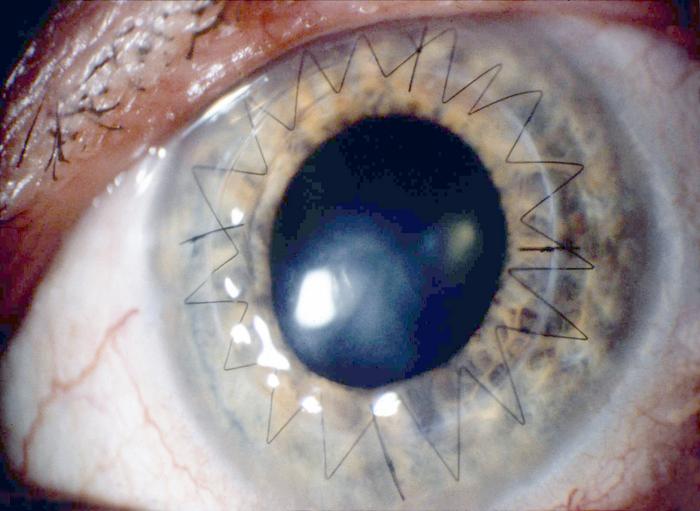Advertisment
Study reveals untapped potential to increase eye donations needed for sight-restoring surgeries

A new study has found there is significant scope to increase the number of eye donations from patients cared for in hospice and palliative care settings – donations which are desperately needed for sight-restoring surgeries.
Researchers from the University of Southampton and clinical partners, including NHS Blood and Transplant, carried out the study, which has been funded by the National Institute for Health and Care Research (NIHR). It found just a small fraction of eligible patients in hospice and palliative care settings are being approached to consider the option of eye donation. This is despite both healthcare professionals and patients having favourable views towards it.
The researchers say practice needs to change so that patients who wish to donate are being offered the opportunity as a part of routine end-of-life care.
Demand for eye tissue
Over two million people in the UK are living with sight loss, taking a huge toll on their lives and costing the economy a reported £4.34 billion each year. Some conditions, such as Keratoconus and Fuchs’ Corneal Dystrophy, can be treated with surgery which removes all or part of a damaged cornea and replaces it with healthy donor tissue (corneal transplant). But there is a shortfall in the supply of donor tissue needed for operations.
NHS Blood and Transplant aims to achieve a weekly stock of 350 eyes for use in surgery or research. But from April 2021 to March 2022, only 88 eyes on average were donated per week.
The RNIB predicts that by 2050, the number of people with sight loss will double to nearly four million (mainly due to the ageing population), further increasing the demand for eye tissue. Each donor can help restore or improve the sight of up to 10 people.
‘Many potential donors’
Clinical partners across England reviewed the case notes of 1,199 deceased patients in three hospice care and three hospital-based palliative care services.
Although 46 per cent of patients were eligible to donate their eyes, less than 4 per cent of potential donors had been approached or referred for eye donation.
Views on donation
To understand attitudes and potential barriers to eye donation, the researchers interviewed over 100 healthcare professionals and over 60 patients and carers receiving palliative care. They also conducted a national survey of 156 service providers.
Dr Tracy Long-Sutehall, Associate Professor at the University of Southampton and lead author of the research which has been published today [3 November] in the Health and Social Care Delivery Research Journal, says:
“Many patients and carers were not aware of eye donation being an option for themselves or their relative. Those we spoke to generally had positive views about eye donation and were open to being asked about their preferences. This suggests there could be many potential donors in hospice and palliative care settings who are willing to donate their eyes after their death so that others might see.”
Knowledge gap
Healthcare professionals were in favour of eye donation being discussed as part of end-of-life care planning but had gaps in their knowledge around eligibility criteria and processes for referral; more than half had received no formal training regarding eye donation. As such, the majority had never, or hardly ever, initiated a discussion about eye donation with patients or family members.
Dr Long-Sutehall added: “Conversations around eye donation need to be sensitively managed, so it’s understandable that healthcare professionals would be reluctant to raise it if they haven’t had suitable training and education.”
Future opportunities
The study demonstrates that there is significant potential for more patients to be given the opportunity to donate their eyes in the future, and for eye donation to be embedded in routine end-of-life care clinical practice.
Emma Winstanley, Lead Nurse for Tissue and Eye Services at NHS Blood and Transplant who was a co-applicant on the study, says:
“This research provides crucial new insight to better understand both patient and healthcare staff views on eye donation. With more patients dying outside of traditional hospital settings, either at home or in hospices, it is essential that patients have the opportunity to donate whenever donation is possible. Eye donation is particularly special as donation can even be possible for patients who have cancer. We know that many patients and families take great comfort and pride from donation. By working closely with hospice colleagues, we can enable more patients to donate and more life-transforming surgeries to take place.”
The researchers highlight several implications for service development, healthcare practice and recommendations for further research, including the evaluation of a Support Toolkit for Eye donation in Palliative care Settings (STEPS) developed by the research team.
Eye Donation from Palliative and Hospice care contexts: the EDiPPPP mixed methods study was funded by the NIHR Health and Social Care Delivery Research programme.
IMAGE: EYE AFTER CORNEA TRANSPLANT.
CREDIT: MUST CREDIT NHS BLOOD AND TRANSPLANT





